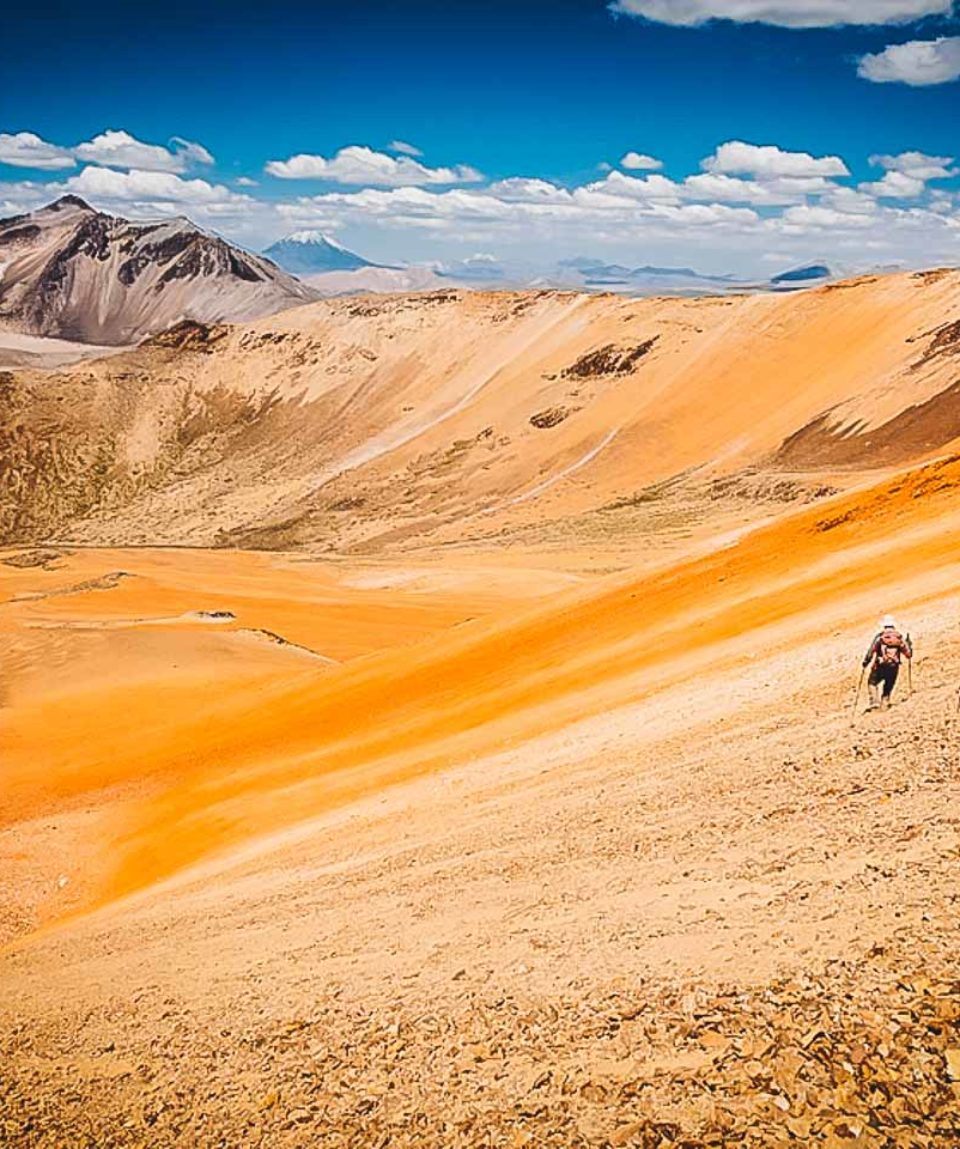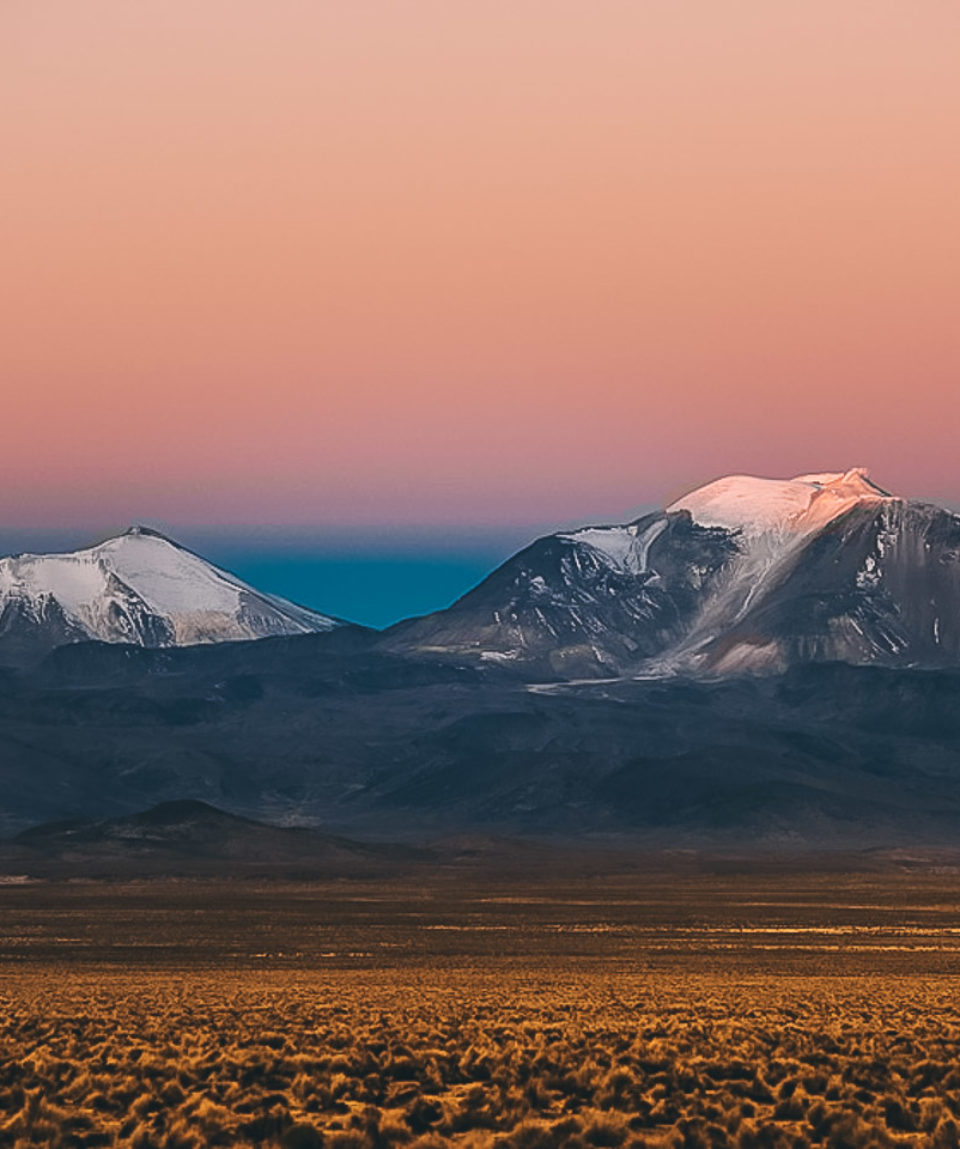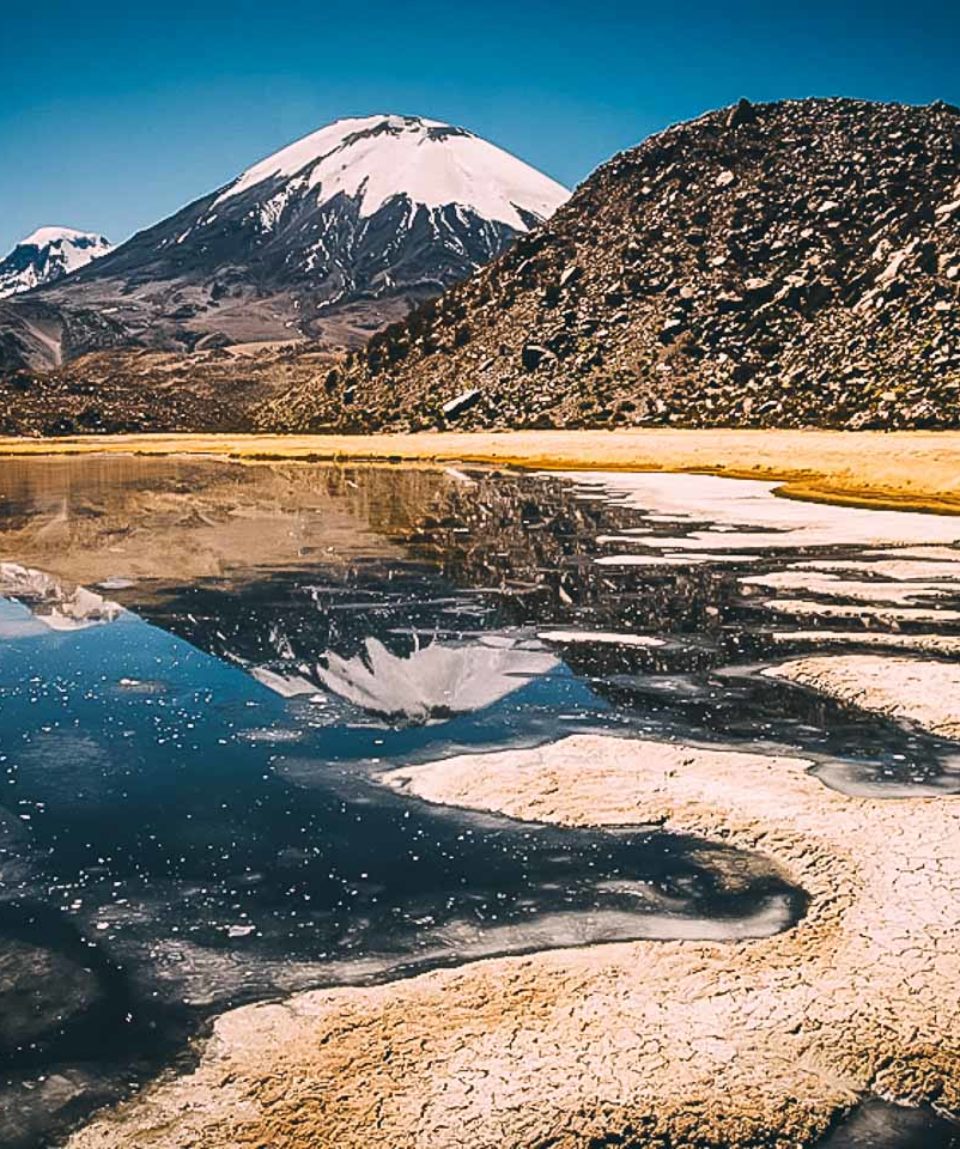Ausangate Trek Tour and trekking in Peru
fromJoin us on this epic journey and experience trekking in Peru like never before. On this journey, we discover southern Peru from a completely different perspective. We start by visiting the Sacred Valley and Machu Picchu. From here we start an 8-day trek around Ausangate, (6,375 m) and the sacred mountain of the Quechuas. The cordillera offers large glacial faces, multicoloured moraines, including the famous mountain of 7 colours as well as the emerald lakes that are set in large glacial valleys. Large herds of alpacas and llamas graze at the bottom of Quebradas. To travel through these majestic locations, we navigate into one of the wildest and enchanting parts of our trek. Our trekking in Peru continues to the islands of Lake Titicaca where it feels like heaven on Earth due to its scenic views and calm peaceful environment.
- Reviews 0 Reviews0/5
- Style Type
- Expedition
- Mountainous
- Peru
- Secret Planet
- Trekking
-
- Level Moderate
- Group Size Medium Group
Join us on this epic journey and experience trekking in Peru like never before. On this journey, we discover southern Peru from a completely different cultural perspective. We start by visiting the Sacred Valley and Machu Picchu. From here we start an 8-day trek around Ausangate, (6,375 m) and the sacred mountain of the Quechuas. The cordillera offers large glacial faces, multicoloured moraines, including the famous mountain of 7 colours as well as the emerald lakes that are set in large glacial valleys. Large herds of alpacas and llamas graze at the bottom of Quebradas. To travel through these majestic locations, we navigate into one of the wildest and enchanting parts of our trek. Our trekking in Peru continues to the islands of Lake Titicaca where it feels like heaven on Earth due to its scenic views and calm peaceful environment.
[route-map id=46639]
- Peru travel adviceby GOV.UK on 24/09/2024 at 8:54 am
New information on Oropouche virus disease and yellow fever ('Health' page).
- Day 1 EUROPE - ARRIVAL IN LIMA
- Day 2 LIMA - CUSCO (3,350 M)
- Day 3 CUSCO - CHINCHERO - MORAY - MARAS - OLLANTAYTAMBO
- Day 4 OLLANTAYTAMBO - AGUAS CALIENTES
- Day 5 AGUAS CALIENTES - MACHUPICCHU - PISAC - CUSCO
- Day 6 CUSCO VISIT OF 4 RUINS - TINQUI
- Day 7 TINQUI - UPIS
- Day 8 UPIS - ANANTAPATA
- Day 9 ANANTAPATA - VINICUNCA - MOUNTAIN ARC-EN-CIEL - CHILCA
- Day 10 CHILCA - AUSANGATE COCHA
- Day 11 AUSANGATE COCHA - COL PALOMANI 5 100 M - JAMPAPAMPA
- Day 12 JAMPAPAMPA - JAMPA COLLAR 5 030 M - PACCHANTA
- Day 13 PACCHANTA - SINGRENACOCHA
- Day 14 SINGRENACOCHA - MALMA - PUNO
- Day 15 LAKE TITICACA, NAVIGATION AND MARKET
- Day 16 PUNO (3 820 M) - LIMA - INTERNATIONAL FLIGHT
- Day 17 ARRIVAL IN EUROPE
ACCOMMODATION
In a good standard hotel (basic: double room) in Lima, In a average standard locations for the rest of the trip (lodge, hostel, homestay).
MEALS
In the cities, we will have meals at local restaurants where we will discover the local cuisine. Often the evening meal is taken in the hostel or at a local restaurant.
Water: plan pellets (Micropur type or others) to disinfect the water you put in your bottle, depending on the source and on the advice of your guide. You can also buy mineral water on site (not included in the price) but its ecological impact is high therefore, we do not recommend it.
No visa for the UK, Belgian or Swiss nationals, for a stay of fewer than three months. For other nationalities, inquire at the consulate or embassy. Passport should be valid for more than 6 months after the date arrival to the country. However, a visa will be required if your flight stops in the USA (see ESTA simplified online procedure). These formalities may change and we thank you for checking the conditions of entry with the consular authorities of the country visited. Each traveller is responsible for compliance with these formalities.
For your trip, plan 15 to 18 kg maximum, outside of your hand luggage, even if in most flights you will be entitled to 20 kg in the hold and 10 kg in the cabin. There is no point in getting too busy and a little space is available to bring back memories. Attention, any extra and overweight bag will be charged directly by the airline during check-in. If you have domestic flights, check that there are no specific baggage restrictions. Finally, note that security checks have become very strict at airports: put the knives, scissors, nail files in your hold bag, the same for bottles and tubes of more than 100 ml.
CLOTHING
You need several layers to add or remove depending on the temperature and your activity. You’ll be able to wash some quick-drying things on the way, including underwear and socks. The following is the recommended list of clothing
- Gore-Tex® waterproof and breathable jacket
- Poncho or rain cape
- Micro-fleece sweater or jacket, finer
- Technical and/or short-sleeved T-shirts (avoid cotton, long to dry)
- Lightweight trousers canvas
- Zip trousers, cropped trousers or bermuda shorts
- Walking socks
- Underwear
- Swimsuit
- Hat, cap or headband to protect from the sun
SHOES
- A pair of walking shoes, which you are used to (to avoid blisters) for hiking trails.
- A pair of lighter walking shoes, which will be useful for flights, transfers, site visits and evenings.
- Pair of flip-flops, sandals or Crocs® type for the toilet, especially
TRANSPORT BAGS AND STORAGE
- A large flexible travel bag (possibly with wheels) or backpack minimum of 60 litres. This luggage must be resistant (use a cover if necessary). You can also protect your belongings from dust or moisture by storing them in one or more plastic bags inside your bag. Four or five covers (ventilated) of different sizes can compartmentalize your things in your bag, which is handy.
- A small backpack of about 35 litres for your personal belongings during the days or half-days of hiking. It will also serve you as hand luggage and cabin during air transport.
There are several items that are highly recommended for you to have. The items are;
- 2-litre bottle and tablets to disinfect water – Pocket knife type Opinel® or Laguiole® and/or a “Swiss army knife” multi-use, to put in the baggage recorded in the hold
- Headlamp type Petzl® + spare batteries
- Hand-charging torch (more eco-friendly and economical)
- Headlamp with red light for nature observation + spare battery
- Good quality sunglasses
- Sunscreen (high index) + lipstick.
- Pair of binoculars to observe the beauty of nature (optional).
- Camera(optional). Remember to protect it from dust and moisture (in a zippable plastic bag with Silicagel bag for example).
- A power adapter to recharge the batteries
- Colour photocopy of the passport facilitates administrative procedures in case of loss or theft (not to be kept in the same place as the passport!). Always in case of loss or theft of the passport, having aside two pictures of identities can be of great service.
Please follow the link for the latest health advice
-
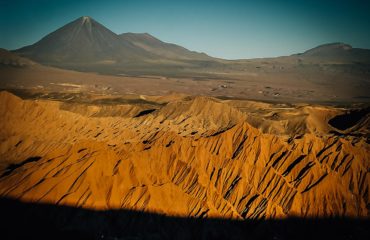 Altiplanique summits - from Licancabour to l’Aucanquilcha 6 176 m
Altiplanique summits - from Licancabour to l’Aucanquilcha 6 176 m -
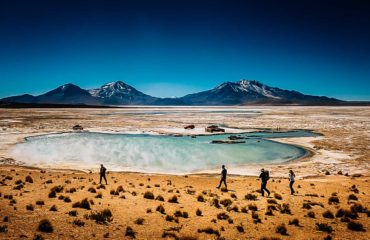 Altiplanique summits - from Licancabour to l’Aucanquilcha 6 176 m
Altiplanique summits - from Licancabour to l’Aucanquilcha 6 176 m -
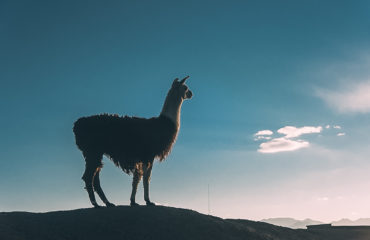 Altiplanique summits - from Licancabour to l’Aucanquilcha 6 176 m
Altiplanique summits - from Licancabour to l’Aucanquilcha 6 176 m -
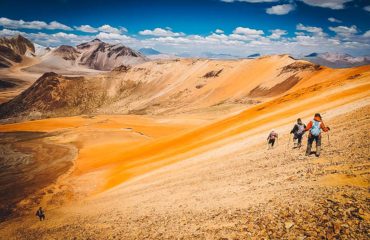 Altiplanique summits - from Licancabour to l’Aucanquilcha 6 176 m
Altiplanique summits - from Licancabour to l’Aucanquilcha 6 176 m -
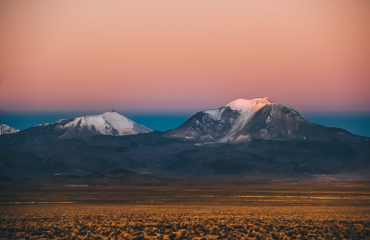 Altiplanique summits - from Licancabour to l’Aucanquilcha 6 176 m
Altiplanique summits - from Licancabour to l’Aucanquilcha 6 176 m -
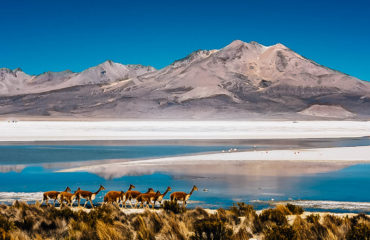 Altiplanique summits - from Licancabour to l’Aucanquilcha 6 176 m
Altiplanique summits - from Licancabour to l’Aucanquilcha 6 176 m -
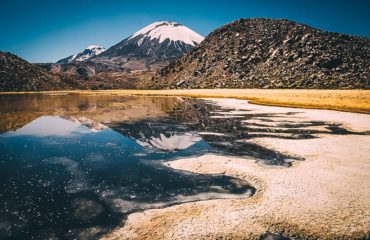 Altiplanique summits - from Licancabour to l’Aucanquilcha 6 176 m
Altiplanique summits - from Licancabour to l’Aucanquilcha 6 176 m


